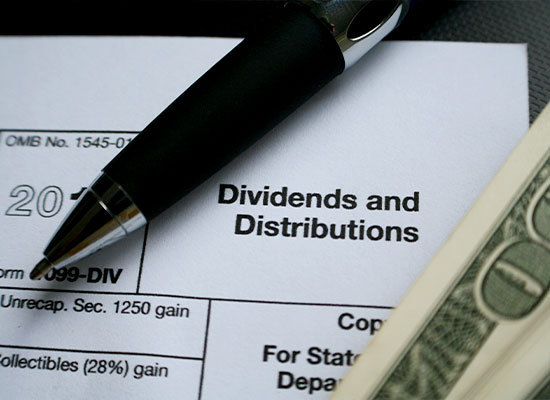 Contact
About Us
Articles
Home
Contact
About Us
Articles
Home

In the multifaceted arena of investment, the allure of dividend stocks remains evergreen. These stocks have carved out a significant niche in the investment world, not only for their potential for capital appreciation but also for their ability to provide a consistent stream of income. For many investors, particularly those focused on long-term growth and income stability, dividend stocks are an indispensable part of a well-rounded investment strategy. This article aims to provide a comprehensive exploration of dividend stocks, examining their critical role in portfolio diversification and the unique benefits they offer.
Dividend stocks stand out in the investment landscape for two primary reasons: the potential for asset growth and the promise of regular income. Unlike growth stocks, which are primarily valued for their potential for price appreciation, dividend stocks offer the additional benefit of dividends – regular payments made to shareholders out of a company's profits. This dual appeal makes them particularly attractive to a broad range of investors, from those seeking steady income to those building wealth over the long term.
In portfolio management, diversification is key to mitigating risk, and dividend stocks play a pivotal role in this regard. By including dividend stocks in their portfolios, investors can spread their risk across various sectors and investment types, reducing the impact of market volatility. Dividend stocks are often associated with established and financially stable companies that have a track record of profitability. This stability can be especially appealing in uncertain or fluctuating market conditions, providing a buffer against the unpredictability of the market.
For income-focused investors, dividend stocks provide a predictable and often reliable source of income. This aspect is particularly attractive for retirees or those planning for retirement, who may rely on these regular payments as a significant part of their income stream. Unlike the fixed returns from bonds, dividend payments can potentially increase over time, offering an effective hedge against inflation and a growing income source.
While dividends are a key attraction, these stocks also offer the potential for capital appreciation. As the underlying company grows and becomes more profitable, its stock value may increase, providing investors with the opportunity for asset growth. This combination of income and growth potential makes dividend stocks a versatile choice for both conservative and growth-oriented investors.
At their core, dividend stocks are shares of companies that choose to distribute a portion of their earnings back to shareholders. This distribution usually takes the form of cash payments, directly reflecting a company's profitability and its commitment to sharing success with its investors.
Dividend stocks differ fundamentally from their non-dividend-paying counterparts. While the latter are valued primarily for the potential to increase in price – capital appreciation – dividend stocks offer an added layer: They provide regular income streams to their shareholders. This income, paid out in dividends, typically comes from the company's profits and is distributed on a regular basis, such as quarterly or annually.
The decision by a company to pay dividends is often seen as a strong indicator of its financial health and future prospects. Regular dividend payments suggest that the company is not only profitable but also confident in its continued success. This confidence is a key reason why dividend stocks are seen as an attractive option for investors, particularly those seeking steady income.
Dividend-paying companies are often well-established businesses with a proven track record. They are usually in stable industries and have reached a point in their growth cycle where they can afford to distribute a part of their profits rather than reinvesting all earnings back into the company. This stage of corporate maturity often brings with it a level of stability and predictability that can be reassuring to investors.
The dividend policy of a company is a critical aspect for investors to consider. This policy dictates how much of its earnings a company will pay out in dividends and how much it will retain for reinvestment. A consistent and sustainable dividend policy can be a sign of a company’s commitment to its shareholders' interests, making such stocks a favored choice for long-term investors.
Dividend stocks strike a balance between offering regular income and the opportunity for capital growth. While the dividend payments provide a direct and tangible return on investment, these stocks also have the potential for price appreciation. This dual benefit means that investors can earn from their investment in two ways: through the steady stream of dividend income and the potential increase in the stock's market value over time.

Dividend distribution is a critical process in the world of investing, where companies allocate a portion of their earnings back to their shareholders. This practice not only serves as a vehicle for sharing profits but also plays a pivotal role in attracting and retaining investors by providing a steady income stream. Understanding how dividends work, including their various forms and significance, is crucial for any investor considering dividend stocks.
The journey of a dividend begins with a company's decision to allocate a part of its earnings to shareholders. This decision is typically made by the company's board of directors and is influenced by several factors, including the company's profitability, future investment plans and overall financial health.
The process starts with the company's board of directors declaring a dividend. This declaration includes details about the dividend amount per share and the payment date.
After the announcement, an ex-dividend date is set. Investors who own the stock before this date are entitled to receive the declared dividend.
On the specified payment date, the dividend is distributed to eligible shareholders. This distribution can be made in cash or, in some cases, through additional shares of stock.
The types of dividends include:
Dividends hold significant value for investors, primarily for the following reasons:

Dividend stocks play a crucial role in diversifying investment portfolios. They can reduce overall portfolio risk by providing a steady income, even when market prices are volatile. Additionally, dividend stocks often belong to established companies with stable earnings, adding a layer of security compared to high-growth but more volatile non-dividend stocks.
Dividend stocks also strike a balance between providing regular income and the opportunity for capital appreciation. This dual benefit positions them favorably against fixed-income investments like bonds, which offer fixed returns but limited growth potential.
Investing in dividend stocks can be a powerful strategy for long-term wealth building. However, like any investment, it requires careful planning and strategy. Two key approaches in the realm of dividend investing are building a diversified dividend portfolio and reinvesting dividends. Each of these strategies plays a vital role in maximizing the potential benefits of dividend stocks.
Diversification is a fundamental principle in investing, and it is equally crucial when investing in dividend stocks. A well-diversified dividend portfolio can help mitigate risk while providing a balanced return. Here’s how investors can achieve this:
Another powerful strategy in dividend investing is the reinvestment of dividends, often executed through Dividend Reinvestment Plans (DRIPs).
DRIPs are programs offered by companies that allow shareholders to reinvest their cash dividends to purchase additional shares or fractional shares on the dividend payment date. This is usually done automatically and often without brokerage fees.
The primary benefit of reinvesting dividends is the compounding effect. When dividends are reinvested, they can earn more dividends, leading to exponential growth over time. This can significantly enhance the long-term value of an investment portfolio.
For investors not reliant on dividend income for immediate cash needs, reinvesting dividends can be a strategic move for long-term portfolio growth. It allows the portfolio to grow in value through both the appreciation of existing stocks and the acquisition of additional shares.
Many DRIPs offer flexibility in terms of how much of the dividend to reinvest and how often. Investors can tailor their reinvestment strategy according to their financial goals and market conditions.

Dividend investing, while offering the potential for a steady income stream and capital growth, comes with its own set of tax implications. Understanding these implications is crucial for investors looking to optimize the returns on their investments. Here, we delve deeper into how dividend income is taxed and explore strategies that can help investors minimize their tax liability.
Dividend income is typically subject to federal income tax. The rate at which dividends are taxed depends on whether they are classified as qualified or non-qualified:
Qualified dividends are dividends paid by U.S. companies or qualifying foreign companies and held for a specific period. Qualified dividends benefit from being taxed at the lower long-term capital gains tax rates, which can be significantly lower than the ordinary income tax rates.
Non-qualified dividends, also known as ordinary dividends, are taxed at the investor's ordinary income tax rate, which is generally higher than the capital gains rate. Non-qualified dividends include those paid by certain foreign companies, real estate investment trusts (REITs), and money market funds.
One effective strategy is to hold dividend-paying stocks in tax-advantaged accounts such as Roth IRAs, traditional IRAs, or 401(k)s. Dividends earned in these accounts are not subject to tax when they are distributed (for Roth accounts) or are tax-deferred (in the case of traditional IRAs and 401(k)s), thereby reducing the immediate tax burden.
Investors can manage their tax liability by balancing their portfolio between high-yield stocks, which offer higher dividends but potentially higher tax liabilities, and low-yield stocks. This strategy can help in managing the overall tax impact while maintaining a steady flow of dividend income.
To take advantage of the lower tax rates on qualified dividends, investors should be mindful of the holding period requirements. Ensuring that stocks are held for the required duration can qualify the dividends for the more favorable tax treatment.
Meanwhile, tax loss harvesting is a strategy that involves selling securities at a loss to offset the tax liability on dividends or capital gains. It’s a strategy often used to manage taxes more efficiently, especially in years when dividend income is higher.
Investors should be aware of their current tax bracket and how additional dividend income might affect their overall tax situation. Sometimes, it might be advantageous to limit dividend income to remain within a lower tax bracket.
Dividend stocks can be a powerful tool for long-term portfolio growth, offering both income and capital appreciation. By understanding their dynamics, carefully selecting and managing a diversified portfolio, and staying informed about market conditions, investors can align dividend investing with their personal goals and risk tolerance, paving the way for financial success.
Alliance America is an insurance and financial services company dedicated to the art of personal financial planning. Our financial professionals can assist you in maximizing your retirement resources and achieving your future goals. We have access to an array of products and services, all focused on helping you enjoy the retirement lifestyle you want and deserve. You can request a no-cost, no-obligation consultation by calling (833) 219-6884 today.


